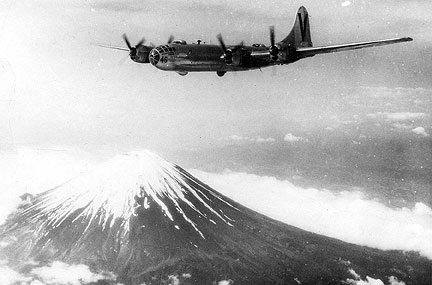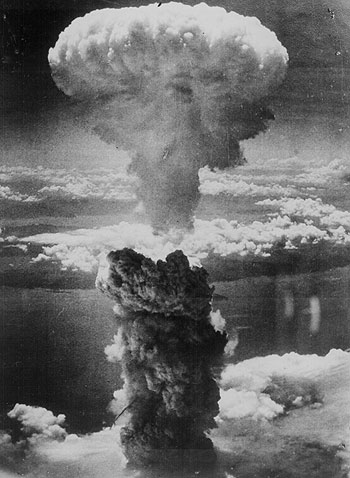
Back in the war torn Pacific ocean, the Japanese were losing badly. After several years of bloody beach parties the Americans had managed to island hop their way to within bombing range of Japan. Their newest heavy bomber, the B-29, could fly higher than Japanese AA guns could fire, faster than Japanese planes could intercept, and far enough to make it to Tokyo from the newly captured islands of Iwo Jima and Saipan. Unfortunately, high-altitude precision bombing proved impossible as America's secret weapon, the Norden bomb sight, proved unable to track its targets accurately. Vexed bombardiers and confused pilots began to report inexplicable navigational and targeting problems to a skeptical high command, and it was finally determined that the B-29's had encountered the jet stream, a region of high winds aloft that played havoc with equipment not calibrated for a B-29 being blown along 150 mph faster than its designed cruise airspeed by a tailwind, or being blown backward over the target area by insanely powerful headwinds. In 1945, the grumpy-looking Curtis Lemay took over command of the troubled B-29 bombing effort, and ordered the planes to attack at lower altitudes at night using incendiary bombs. Since most Japanese houses were constructed by the same guy that builds the little paper mache buildings for Godzilla movies, bombing accuracy wasn't important. It only took a teaspoonful of napalm to rezone entire cities as parking lots, and pretty soon most of Japan sounded like a big bowl of rice krispies.
The Japanese flung everything they had at the American ships to stop them, but they didn't have much to fling. Their navy had been annihilated, their raw material supply strangled by US submarines and aircraft, and many of their troops simply sat and starved on distant islands that the allies had chosen to bypass on their way to Tokyo. There were few experienced pilots left, so the Japanese decided to accelerate their training program by omitting the tedious and difficult landing portion of the syllabus. Instead, they offered aspiring heroes a bit of sake and a colorful headband, and encouraged them to crash their planes into American ships. They were called Kamikazes, or Divine Wind, after a typhoon that wrecked an invading Mongol fleet a few centuries earlier. (Although the wind had less to do with it than the fact that the Mongols were better horse riders than they were shipbuilders) The Kamikaze came as an unpleasant surprise to the Americans, and did a great deal of damage, but it was inadequate to stem the overwhelming tide of Allied naval and air power. It's only really lasting impact on the American's navy was to have a drink named after it.

The fanatical resistance of the Japanese made it obvious to the Americans that an invasion of the mainland was likely to cost lots of lives, so it was decided to drop the atomic bomb on them in hopes of hastening their surrender and making an invasion unnecessary. The first bomb fell on Hiroshima on August 6, 1945. It flattened the city so completely that no one else in Japan even heard about it. The few people who survived had no way of getting the news to nearby cities, and no one in Tokyo had any real idea of the magnitude of what had happened until they read the White House press release. In the time honored tradition of cleaning up at the peace table, Russia took that opportune moment to declare war upon an obviously doomed Japan. This was finally enough to convince even the Japanese generals that it was time to talk peace, but unfortunately for Nagasaki, the decision did not come soon enough. Another Japanese city disappeared beneath a mushroom cloud, and the war finally ended as it began: from the air.
So, as the record plainly shows, it was air power that proved to be instrumental in deciding the fate of nations during World War II. The aircraft carrier eclipsed the battleship as the backbone of the fleet, submarine designers began looking for ways to avoid surfacing ever again, and Billie Mitchell had finally made his point. So, naturally, the surrender of Japan took place on the deck of the U.S.S. Missouri...a battleship.
Some people never learn.








